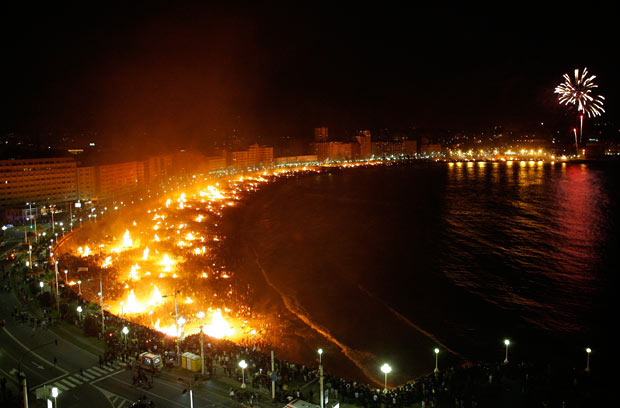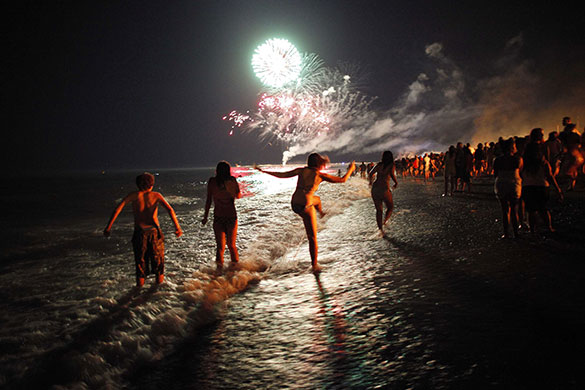Next week, on the night of Monday 23rd June, the shortest night of the year, towns along the coast of Spain will be celebrating La Noche de San Juan, Saint John’s Night, the eve of Saint John’s Day. Despite the name, it is, of course, an essentially pagan festival marking the passing of the summer solstice, and is a time for rituals of purification, renewal, and the assurance of good fortune for the coming year.
 La Coruña – photo courtesy of The Telegraph
La Coruña – photo courtesy of The Telegraph
Preparations for the festivities may go on for several days beforehand, particularly the building of the bonfires that give them their popular name, Las Hogueras, or the bonfires of Saint John. These are traditionally made on the beach, mostly of driftwood, but including old furniture, or indeed, anything else that you want to ritually dispose of. They are lit at dusk and often kept burning until dawn, and from a distance the sight can be both impressive and a little eerie. It’s also common to burn an effigy of Judas Iscariot, a Christian touch added to the original, and in Alicante satirical models of local figures that are specially made for the occasion and paraded around the streets before being added to the pyres (although influenced by it, this is not to be confused with the Valencian fallas festival in March). As with all such celebrations (especially in Spain), this is the time for families and groups of friends to gather round the flames, sharing food, drink and the communal spirit.
When the fires have burned down sufficiently, you are supposed to jump over them three times. This is said to purify and cleanse you, and to burn away all your problems, but if bonfire-jumping seems too risky, don’t worry, there are other ways to achieve the same effect. Women can prepare perfumed water, made with the scents of seven plants, including roses, rosemary and laurel, for washing or bathing. Most common is to take a dip in the sea at midnight, washing away your cares and making a new start for the new year. In many places it’s considered to be bad luck to bathe in the sea before Saint John’s Eve, and in a climate like Spain’s this may be why people are so enthusiastic about this particular ritual!
 Malaga – photo courtesy of The Guardian
Malaga – photo courtesy of The Guardian
One of the biggest Saint John’s Night parties is in Malaga, and thousands of people will spend the day preparing the bonfires, and everything else you need for an all-night beach party. If you’re in town it’s an unmissable experience, especially after midnight when the serious revellers get going in earnest, singing and dancing in the dying light of the fires. You may even end up sleeping out under the stars, but if not, you have a comfortable apartment to go back to.
In some parts of Spain it is customary for to go to sleep on St. John’s Eve with three potatoes under your pillow – one peeled, one half-peeled and the other unpeeled. When you wake up take one of them out without looking. If it’s peeled, you’ll have money problems, half-peeled signifies a year of ups and downs, and unpeeled means a year of prosperity and good health. No cheating now.